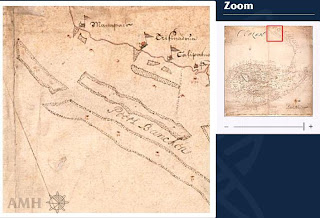Rahul, I am happy your boys did not win!
Dear Rahul Dravid,
You might think I am cynical, you might think I am negative and you might think I am being sarcastic, but the fact is I am happy that your boys did not win. Rather you did not deserve a victory because; you did not have the mental character to win. Rahul, I love Indian team, but I love cricket also. If would have won against Sri Lanka, or if you would have beat Bangladesh, I would probably think that a team that did not deserve victory on that day has won. I think you don’t deserve, not because you are inefficient players, but you are an inefficient team.
I am sure with the sort of pressure you had on field, you might not have appreciated Bangladesh’s performance the on that day. Find a recording and see the match again. You will start loving cricket more. I have witnessed the grit and determination that the team (…team, not individual players) exhibited, only with Australians and Pakistan before, and probably Sri Lanka in 1996. I have not seen such a performance by your boys on any given day. I would even say I have not witnessed such a performance from South Africa and Lloyd’s West Indies. While I am in awe of the Bangladeshi performance I am talking only about their team performing skills which you lacked on that day and which is your weak point, on any given day. Team performance is often exhibited on field through body language, intra-team communication and killer instinct attitude in every delivery (received or served). You guys were at rock bottom of your morale, exhibiting a dead man’s body language.
Successful teams can be classified into two types. One, that win on technical perfection; examples are South Africa under Hansie Cronje and Clive Lloyd’s invincible team. Two, that win on an emotional high supported by excellent individual skills; examples are Dada’s Indian team supported by excellent individual performances by Sachin and you, Imran’s Pakistani team supported by geniuses of Javed Miandad and Wasim Akram, Ranatunga’s Sri Lankan team with Sanath Jayasuriya and Arvinda De Silva. There is also a third variety which has a dangerous combination of both at the highest. That is Australia, both under Steve Waugh and under Ricky Ponting. Logically, a coach should have sat down to classify what is the temperament of the team, find its strengths, weaknesses, opportunities and threats and approached you accordingly. I don’t say that Greg Chappell has not done that, but I say, it just doesn’t show.
Individually just imagine the caliber of your boys. Between Saurav, Sachin and you, you share close to 35000 runs. You are the three of only six batsmen who have crossed 10000 runs in ODIs. What bad could be said about Sehwag apart that he has been in poor form for a long time? On a good day anyone knows and I am sure Ricky Ponting knows god of death cannot be deadlier. Yuvi, a man in form, who could perform even after an injury and seen as the future captain. And Dhoni? The messiah whom we have been waiting for all these years, a wicket keeper who could bat, an Indian version of Moin Khan, Boucher or Kaluwitharana, if not Adam Gilchrist. You had gone to the Carrebean with a five pacemen for the first time. Probably, for the first ever time, Indian team had these many pacers. And for the great Indian spin, you had Jumbo Kumble, the epitome of self confidence and how on earth could you drop him from a crucial match against Lanka? How come such great individual players could not perform as a team? Because they are just not used to.
I again reiterate that as a team your boys never deserved to win. There was no exhibition of team spirit. You could win or lose a match but you should never lose the morale. But your boys never had that morale in the first place. I don’t say that you are a bad captain but I am sure Saurav was a better captain, because he knew if at all India could win, it was only because of the emotional high, and only an emotional high will bring this team together. For god’s sake understand that India is not South Africa. Indians are made of emotions and our blood has slightly higher temperature than that of South Africans. Greg and you tried to make a South African lion out of this team but ended up making a Central African chimpanzee. Indians are Indians and you need to treat them the Indian way. Rahul, just tell Greg that we even eat pizzas with paneer and have vegetarian hot dogs.
To all of us, cricket is next to religion. We enjoy cricket when we travel in the local trains, when we get crushed in the crowded bus, when we walk on a polluted road or when we fight with a guy who has just banged on our car. We love cricket more than Amitabh Bachan or Rajnikant. Fans would not agitate in front of Amitabh’s house or Rajnikant’s house if they gave a bad movie, but even kill themselves if you played badly. Rahulbhai, victory comes and goes, matches are won and lost, but spirit should never die. Indian fans did not ask you to win every match, they did not even ask you to win the Bangladesh match and Sri Lanka match. They just asked you to die like a warrior when you had to die. Don’t present a meek surrender. On that day you weren’t boys in blue, you were boys in pale.
Boss, play cricket with that spirit with which Indian Junta watches cricket.




